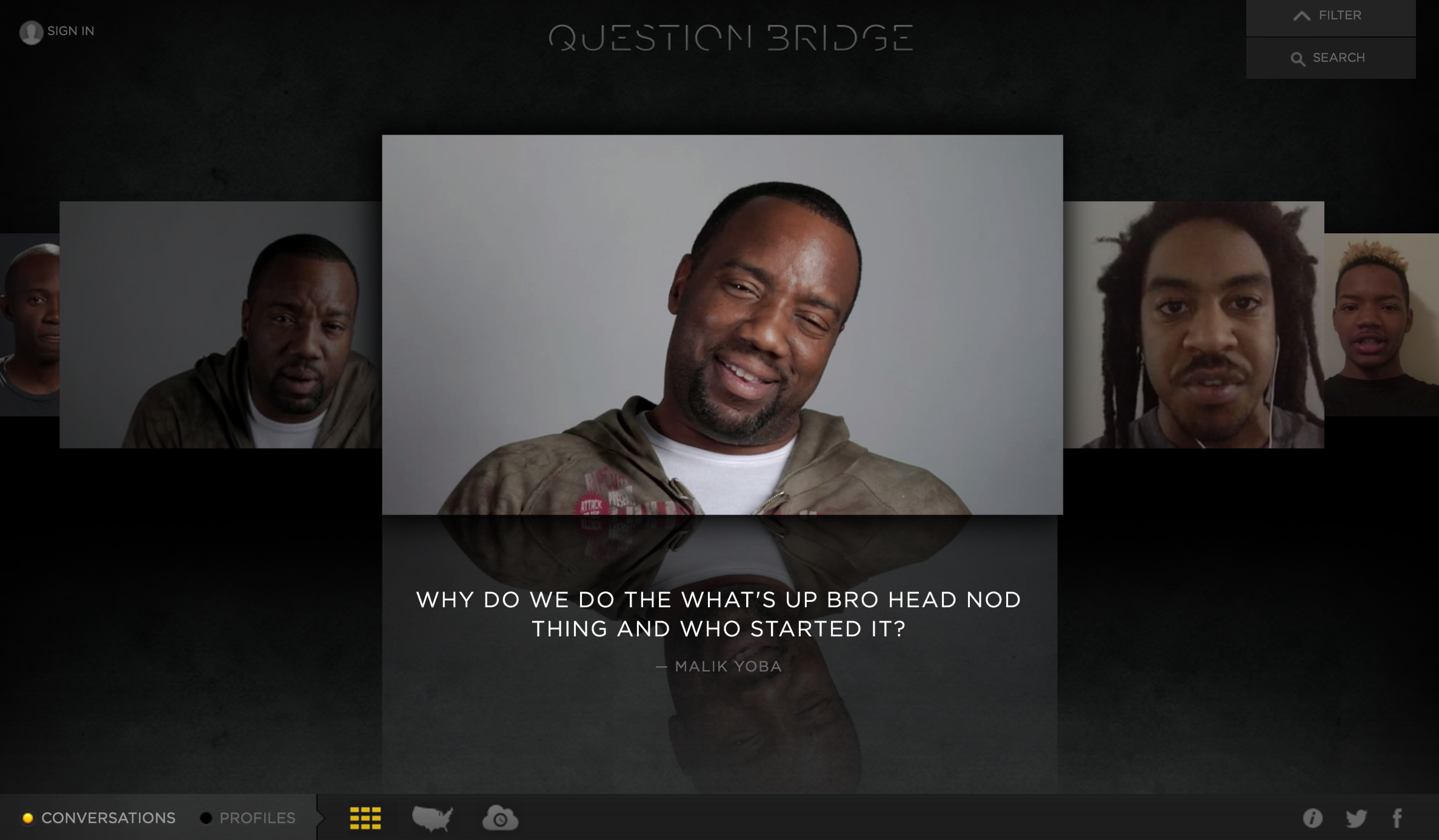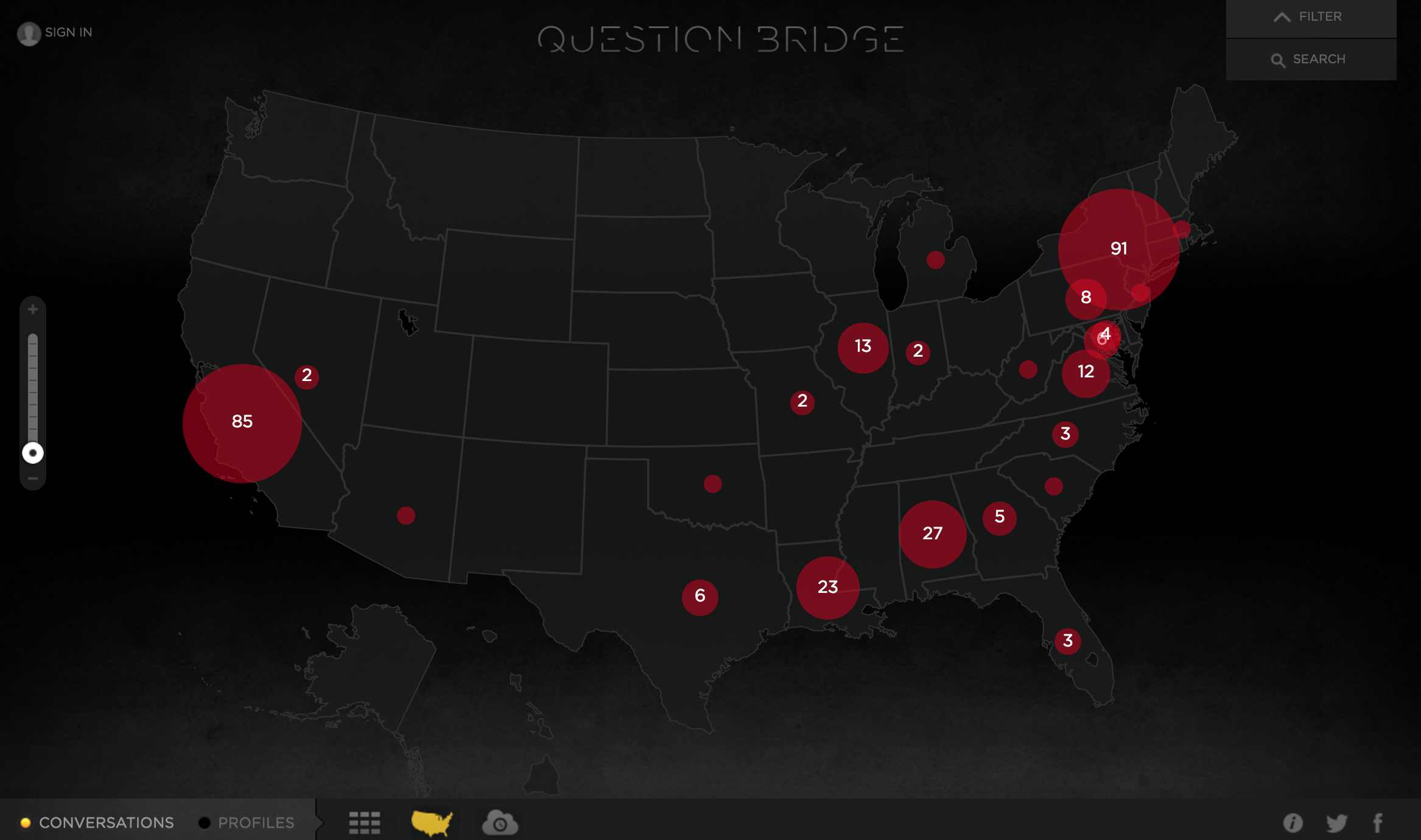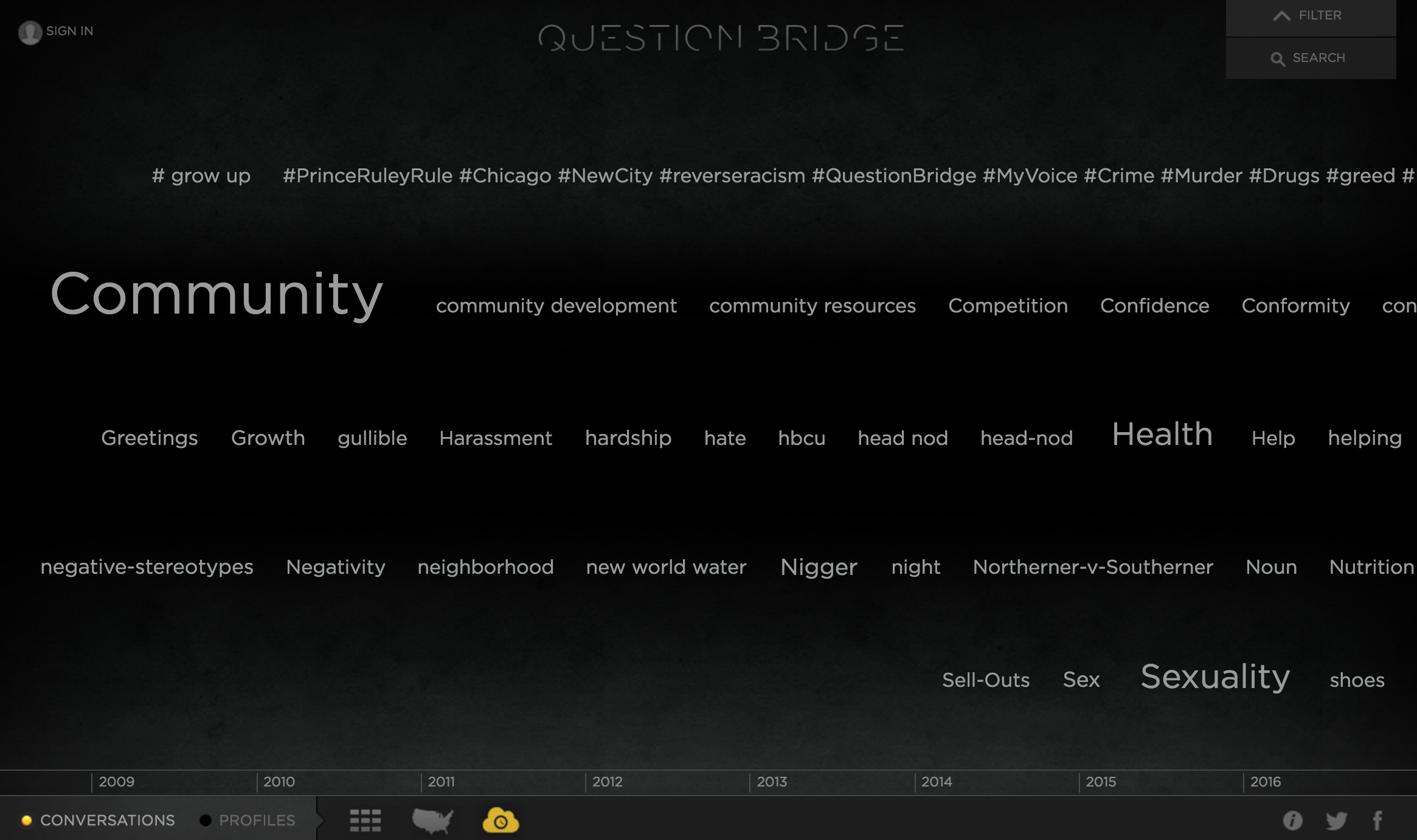The Question Bridge is a multi-format documentary that explores the multifaceted identifies of Black men in America. Initiated in 2012 by artists Chris Johnson, Hank Willis Thomas, Bayete Ross Smith and Kamal Sinclair, it has since been exhibited as a video art installation, translated into an interactive website and app, and formed an education curriculum for high school students.1
Narrative
The piece is composed of video interviews with individual subjects which are collectively brought into relation through a question-answer sequence, a technique called the “Question Bridge”.2. Although the various subjects are not speaking directly to each other, the sequencing of the footage puts them in conversation with one another—asking and responding. This format of interweaving the various stories showcases the layered, complex and multidimensional identities and narratives of the subjects. By presenting narratives which both enforce and contradict each other, the artists attempt to dismantle and frustrate the media’s presentation of a presumptive singular identify that “Black Males are.” 3
Format
In the “Explore” mode on the interactive website, the content can be explored through two lenses: the conversations or the individual profiles. A second layer of organization provides navigation by index, geography, or tag.



For interfaces that provide a multitude of navigational and organizational structures, I often wonder whether the piece would be stronger with a single mechanism for organizing the content? Are users overwhelmed by the many ways in which they can explore and does this overshadow or distract from the content itself?

The homepage arguably provides the opposite level of agency to the user. Various videos composited from multiple clips automatically play when a user visits the page. The artists have created a narrative out of the individual clips, placing them visually side by side and playing them in a predetermined sequence.
These two formats provide the user with different levels of agency and in turn the two formats respond to the idea of “narrative” differently. The “constructed” narrative playing on the homepage presents a point of view established by the creators. They have chosen how long each clip plays, the sequencing of the clips and which clips respond to the question asked. In contrast, the “explored” narrative is continually being constructed as the user engages with different clips.
What underscores both narrative forms is the consistent directorial style. The subjects of the videos all speak directly into the camera, simultaneously engaging with their fellow video subjects but also with the viewer. Through this technique, viewers are intimately placed actively within the conversation rather than positioned passively outside of it as an observer.